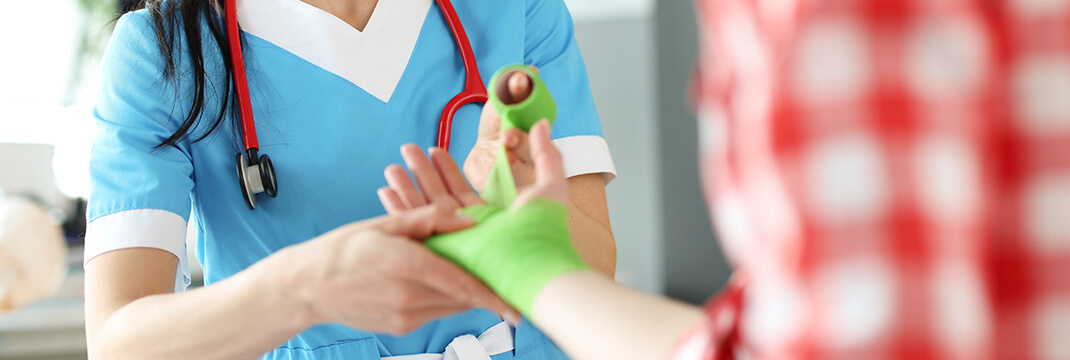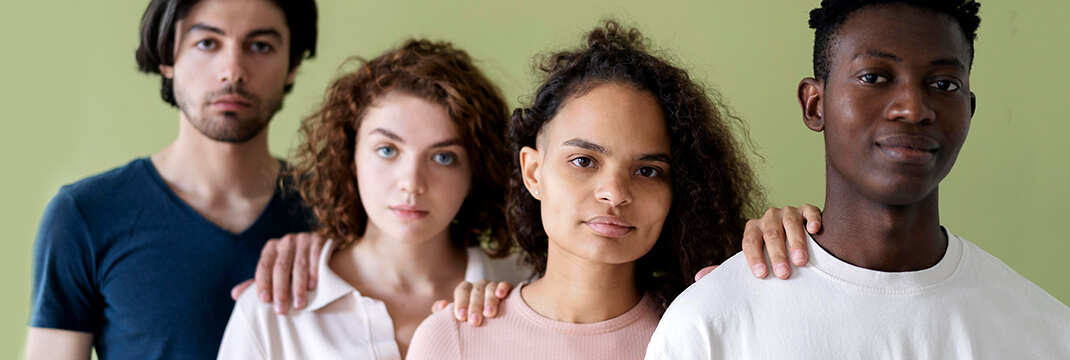
1. Patient name: Mohammed A.
2. Patient age: 54
3. The ethnicity of the patient: He is Asian. As a Muslim, he believes in using the right hand for feeding and drinking. His culture also requires males to undergo circumcision eight days after birth. They also believe in trimming their mustache, clipping their nails, and shaving armpit and pubic hair as a sign of cleanliness. Their culture also requires them to wash related organs after urination or defecation. Women are considered unclean when menstruating, and they should refrain from intercourse during it.
4. Social/Family support: The patient lives with his wife A. Mohammed and their three children. His family, relatives, and close friends act as his support system, providing him with complete practical and emotional support during his illness.
5. Primary diagnosis: The primary diagnosis was diabetic foot ulcer. Mohammed A. was diagnosed with Type II diabetes in 2005. During his last visit to the local diabetic clinic, the clinicians diagnosed an ulcer of his left foot. However, he did not follow the doctor’s recommendations regarding the proper foot care in people with diabetes. Sometimes, the patient could intentionally skip foot care and taking medications. He did not want to recognize that his disease was severe and it could lead to detrimental consequences both for his health and lifestyle (Miller & DiMatteo, 2013). Moreover, he was afraid of the potential economic burden because of possible hospitalization. As a result, he skipped visiting his physician for almost two years. The patient’s intentional nonadherence and poor glycemic control have led to a dramatic progression of diabetes that caused the development of the diabetic foot.
6. Co-morbidities: Co-morbidities hinder the healing of wounds and exasperate the prognosis of the disease. Mohammed A. suffers from obesity, lower extremity arterial disease (LEAD), dyslipidemia, and hypertension, all of which pose a real risk to his health. Narrowing and occlusion of the patient’s arteries from atherosclerosis often cause a gradual decrease of blood supply to his limbs, thus leading to ischemia and necrosis. These complications may lead to a lower limb amputation. Moreover, the patient is a heavy smoker, and he drinks alcohol. These practices, especially smoking, have been known to slow down the process of healing in the patients with wounds.
7. Braden score: The size and the form of Mohammed A’s diabetic ulcer have not changed since his last visit to his physician. However, he experiences a little pain in the calf muscles when he walks. When he sits down and has a rest, this pain vanishes. The assessment of the patient’s wound on the Braden scale has demonstrated the following results. His nails are thick and long enough. The skin on his left foot has additional redness, and there is an ulcer on it. The skin on his right foot is dry, and there is a pre-ulcerative lesion on it.
8. Caregiver: The caregiver is the patient’s wife, A. She changes the dressing on her husband’s foot ulcer, following the prescription of his healthcare provider. She also assists him in checking for the changes in the foot such as blisters, cuts, and swelling that may point to complications (Miller & DiMatteo, 2013). She helps him monitor his blood glucose levels through regular testing. Finally, she aids him in performing simple physical activities and the preparation of meals that will help him keep his blood glucose level within the normal ranges.
9. Type of wound: The diabetic foot wound under analysis belongs to the neuro-ischemic type because Mohammed A. suffers from both neuropathy and ischemia. He has cold feet, weak pulse, blue skin, and reduced hair on foot. He also has tingling, numbness, burning, and pain when he tries to use this foot. Around the ulcer, the skin is scaly and dry. He has not developed any form of foot or joint deformity.
Invite your friends and get bonus from each order they
have made!
Considering the etiology of the wound, one can see that it has developed in the foot ulcer as the result of neglected diabetes of Type II. Belonging to Grade 1 of Meggitt–Wagner classification, the foot wound under analysis damages the skin, extending through the subcutis. Abscess process is absent. Ulcer area is 2.1-1.3 cm. The depth of the wound is 0.3cm. The percentage of the tissue types in the wound is as follows: necrotic tissue-0 %, sloughy tissue – 5%, granulating tissue – 5%, and epithelizing tissue – 90%. Due to the current effective treatment and the patient’s adherence to his physician’s recommendations, the development of the diabetic foot ulcer is slow.
10. Current wound treatment: The treatment of diabetic ulcer is time-consuming and it may last for several months. Currently, the patient is prescribed debridement and antibiotics for the treatment of the wound. The debridement process helps remove dead skin and tissue to allow healing. The procedure is performed at the hospital during visits once every week (Miller & DiMatteo, 2013). The patient also takes broad-spectrum antibiotics to help destroy bacteria causing the infection. At home, the wife helps him clean and dress the wound twice daily.
11. Wound care recommendations: Mohammed A. is recommended to use a range of wound products such as medical tapes, adhesive skin closures, barrier creams, and the dressing. The frequency of changing the dressing is determined by the development of the wound. Currently, this should be done twice daily. The patient may be recommended to try innovative treatments such as hyperbaric oxygen therapy, growth factor therapy, and tissue-cultured skin substitutes. Hyperbaric oxygen therapy suggests placing the client into the special hyperbaric chamber, where 100% oxygen is to be delivered under high atmospheric pressure. As a result, the patient’s tissues will be enriched with an additional portion of oxygen that would promote his wound’s healing process. Considering that tissue in the wound is epithelializing pink, the dressing is to protect new tissue growth and it should be changed daily.
Growth factor therapy suggests placing the special topical gel with human growth cells to the patient’s wound. These growth cells are to be developed in laboratories, contributing to the proliferation of the patient’s cells and advancing his healing. The procedure of skin substitutes suggests the innovative technology in the bioengineering field, which presupposes covering the wound with living human cells. This treatment would contribute to alleviating his pain and substituting damaged skin as well.
You may find this article Nursing Pico/Picot Questions Writing Service useful.
12. Nutrition: The patient must keep to the healthy meal plan to promote healing of his wound. This well-balanced diet will contribute both to improving the state of his health, which will also help the health of his foot. The first issue to implement is stabilize the blood sugar, observe insulin levels, and calculate nutritious elements in the personal health plan (Miller & DiMatteo, 2013). The patient should quit smoking and limit alcohol use. Ignoring these diet recommendations may lead to the development of further health complications such as extending the dimensions of the current ulcer and appearing new ones.
13. Recommendations for support services and activity: Mohammed A. must ensure that he avoids all activities that increase his risk for foot injury, including walking barefoot, getting into the bathtub without testing water temperature, and using heat pads on the feet. Sometimes, patients may require bed rest, with elevation of the limb to promote blood supply (Miller & DiMatteo, 2013). He should use crutches to assist him in movement.
14. Measures to prevent further development of the wound: Strict adherence to the physician’s recommendations as well as regular and routine screenings and check-ups of the patient’s blood glucose and peripheral vascular sufficiency will prevent the wound from further development. Shoes should fit loosely, and socks should regularly be changed. Customized shoes and cushions decrease pressure on the feet and reduce the chances of further development of wounds. Frequent feet exams also help check the wounds before they worsen or grow bigger (Miller & DiMatteo, 2013). Using lukewarm water and soap daily to clean feet, pat drying, and moisturizing them may assist in wound healing. The patient should quit smoking since it delays blood circulation and his wound’s condition may worsen.

Top Writer Your order will be assigned to the most experienced writer in the relevant discipline. The highly demanded expert, one of our top 10 writers with the highest rate among the customers.
Hire a top writer for $4.4015. Changes of the dressing: As Mohammed A. prefers staying at home, his wife changes his dressing. She has had some nursing training and copes with the challenge herself in a perfect way (Miller & DiMatteo, 2013). He is required to change the dressing at least twice daily, especially if it is exudative to prevent wound infection.
16. Healthcare insurance: The patient has Medicare healthcare insurance, obtaining the necessary financial support. It covers all costs that he may incur while in the hospital, including medications.
17. Costs: Medicare insurance package comprises the significant part of the costs of wound care products. The incurred costs include admission, medications, dressings, tests, and any surgical intervention that may be necessary in the process of treatment.
18. Patient prognosis: If the patient is under long-term surveillance and he does not develop any additional wounds, the prognosis is good. With successful treatment and healing of the ulcer, the 5-year cumulative rate of amputation and recurrence is 12% and 66% respectively. Severely infected foot ulcers have a higher risk of mortality.



